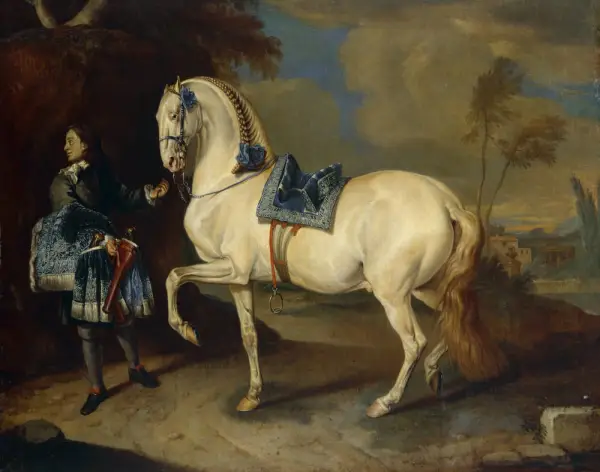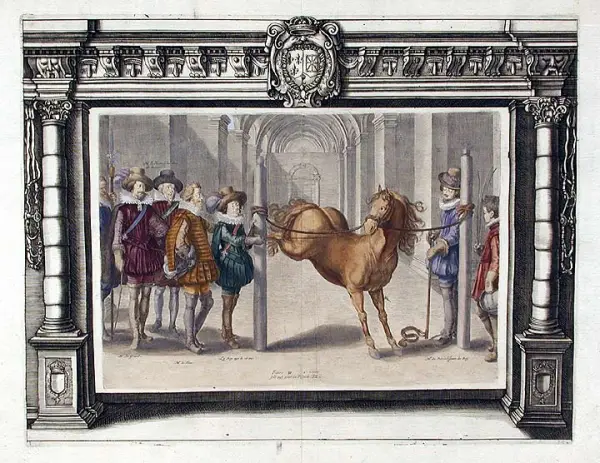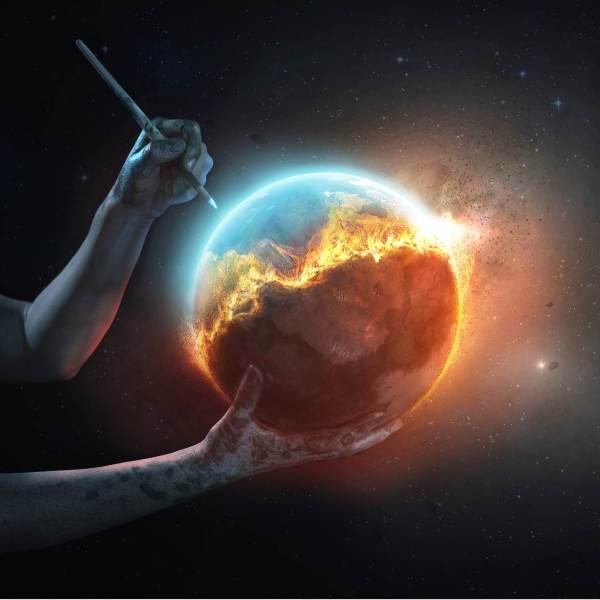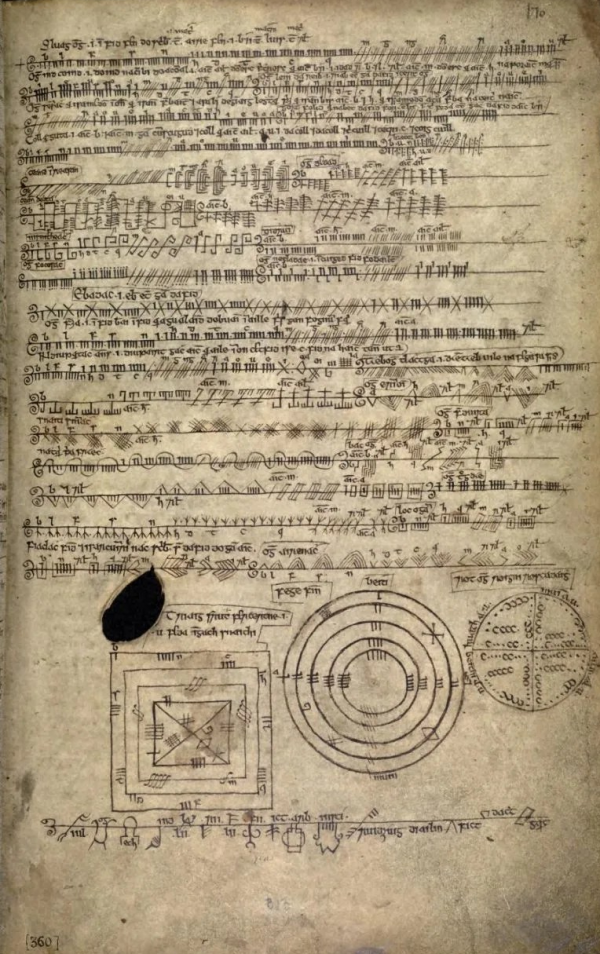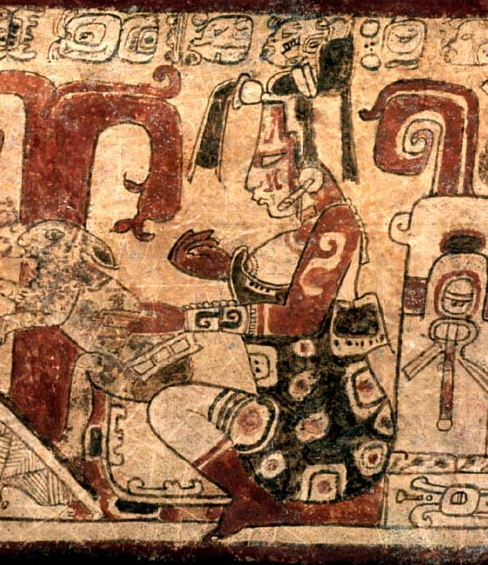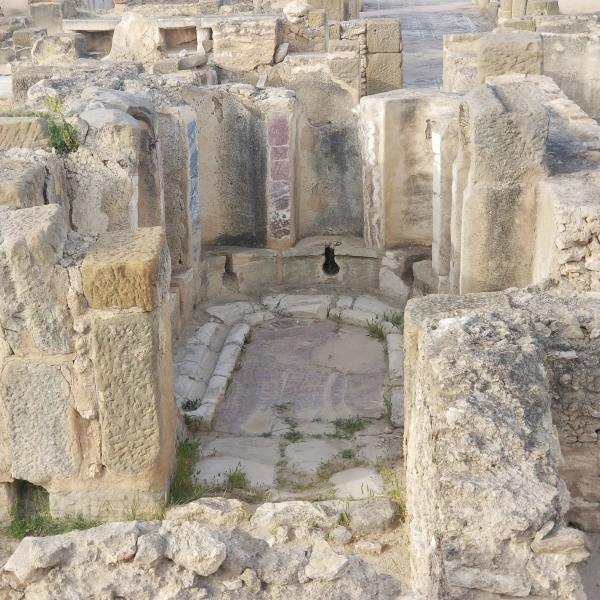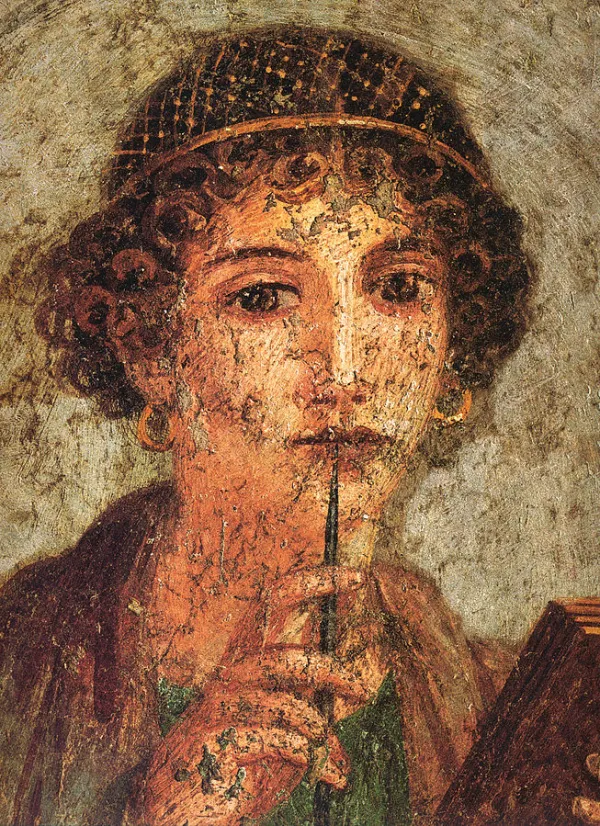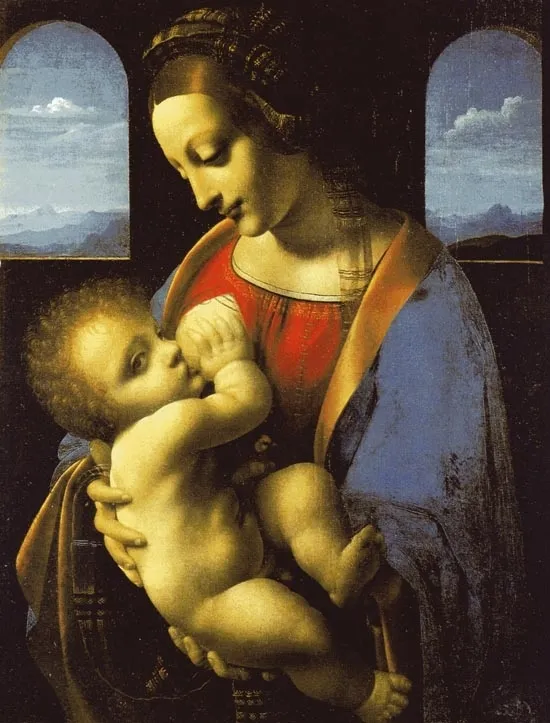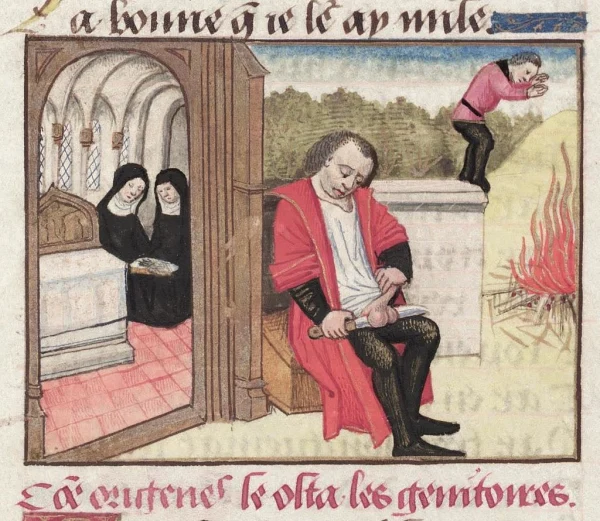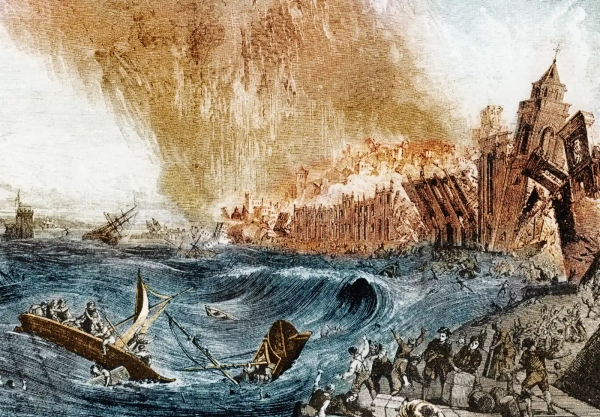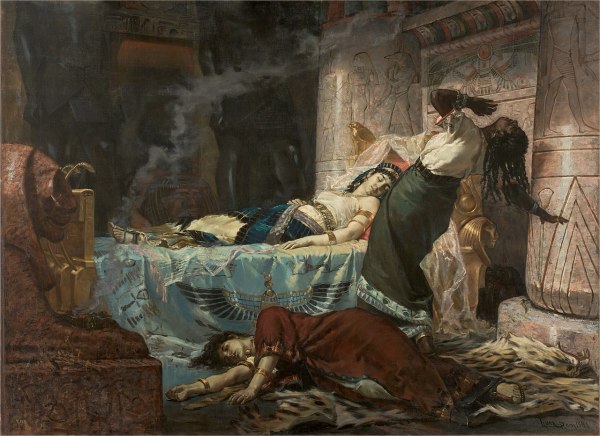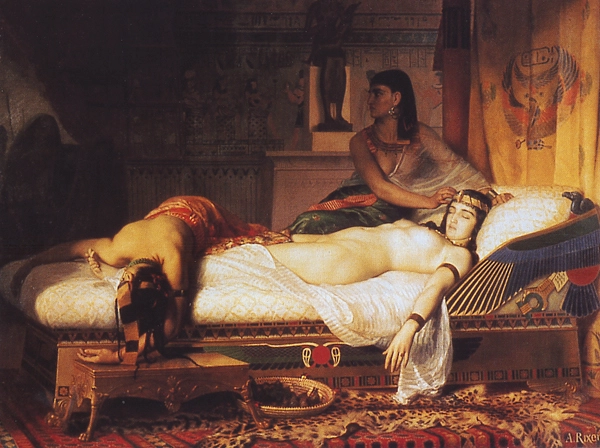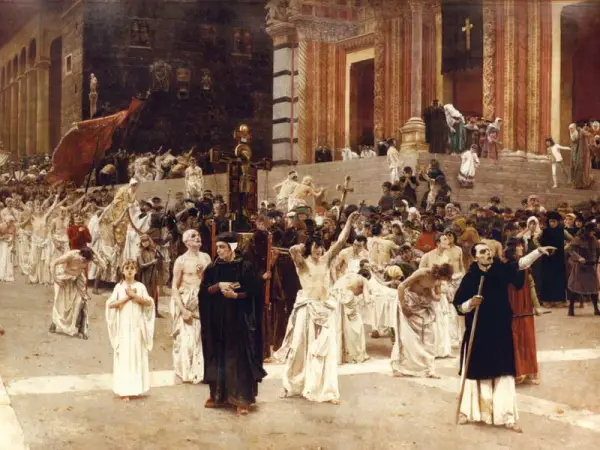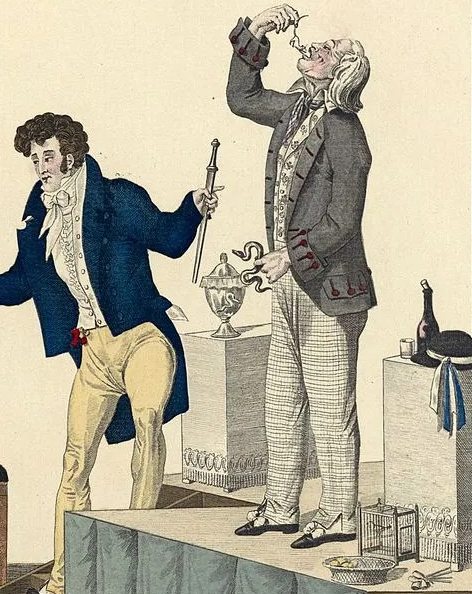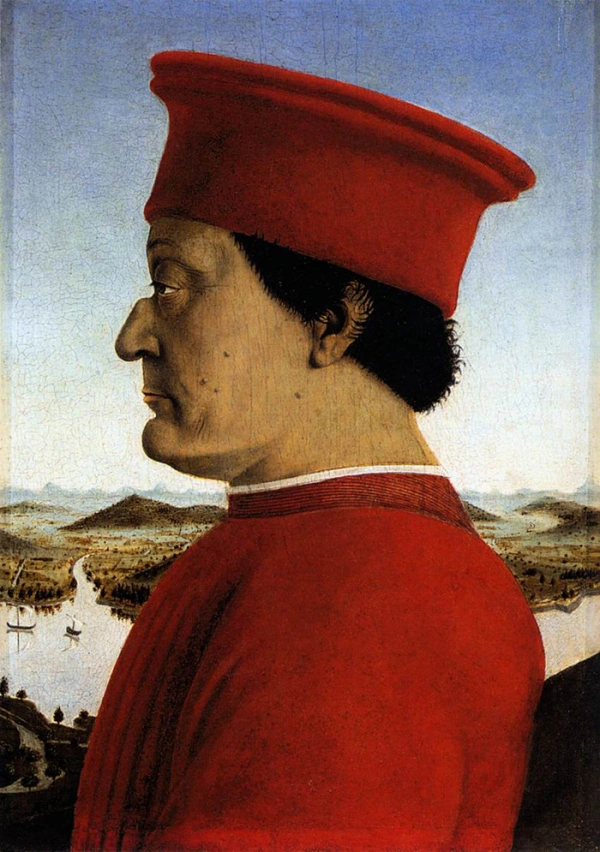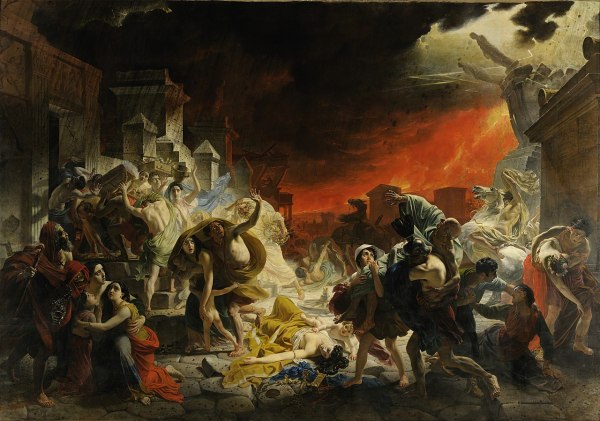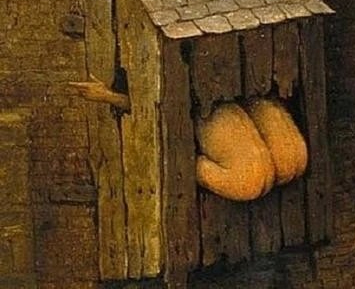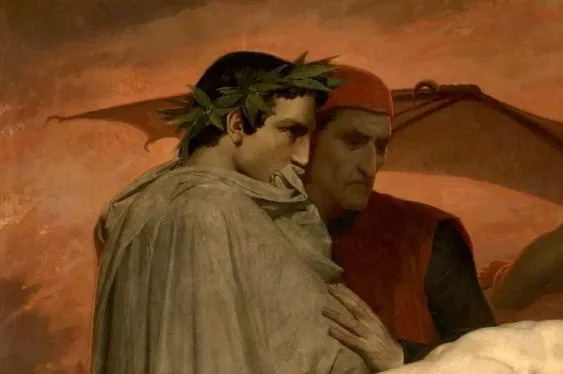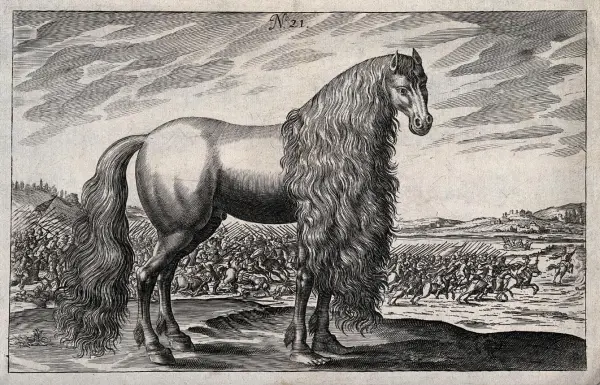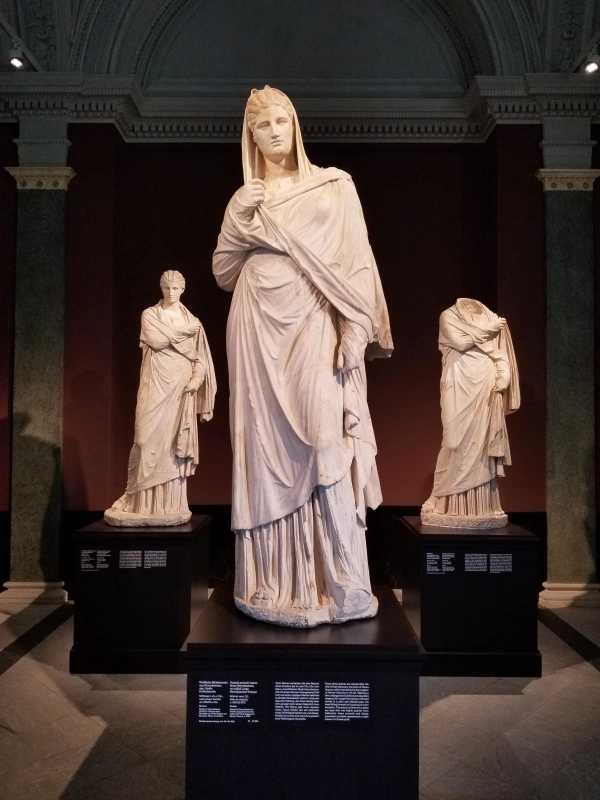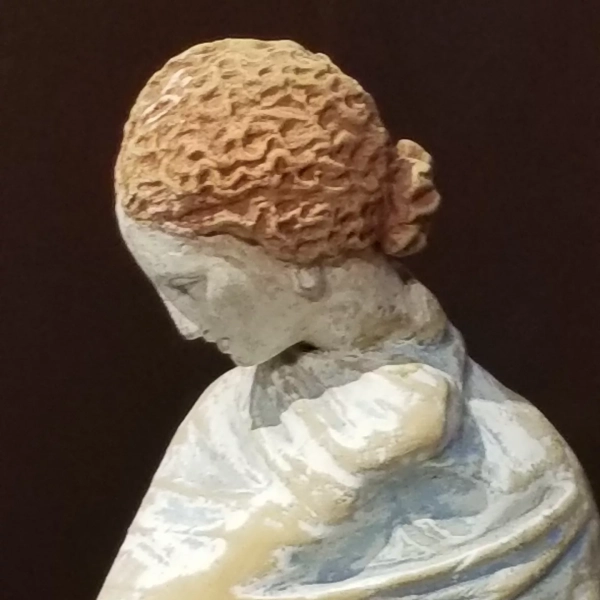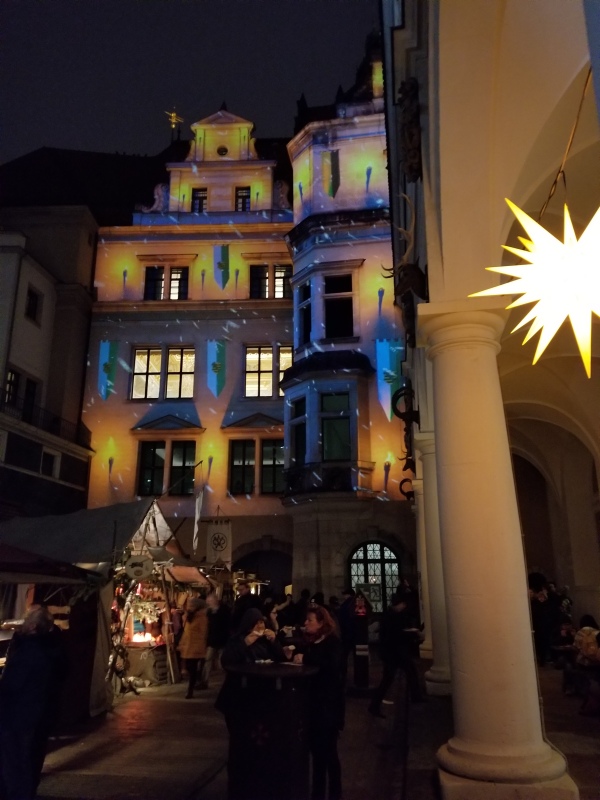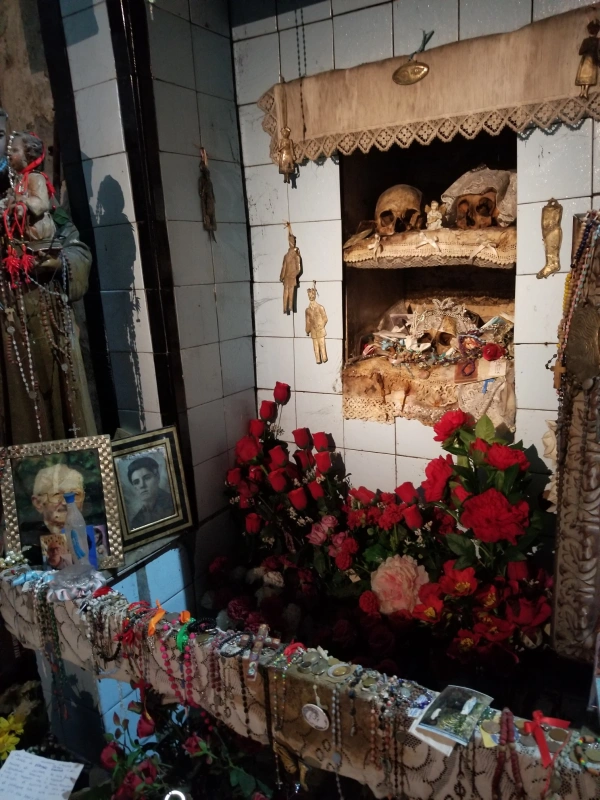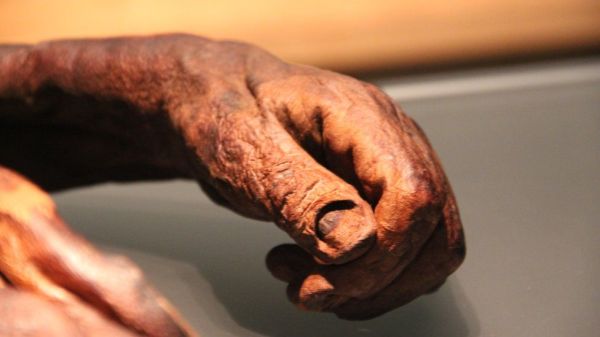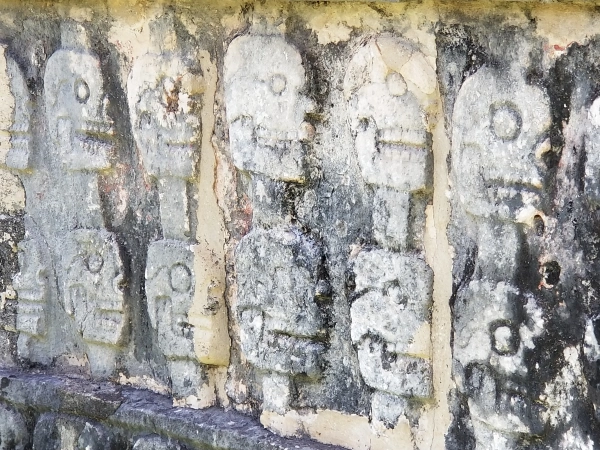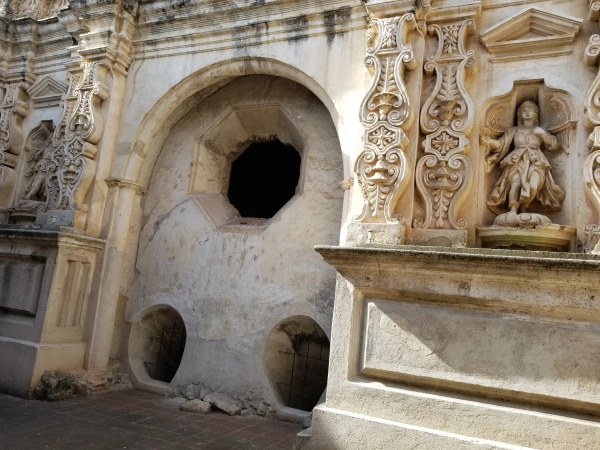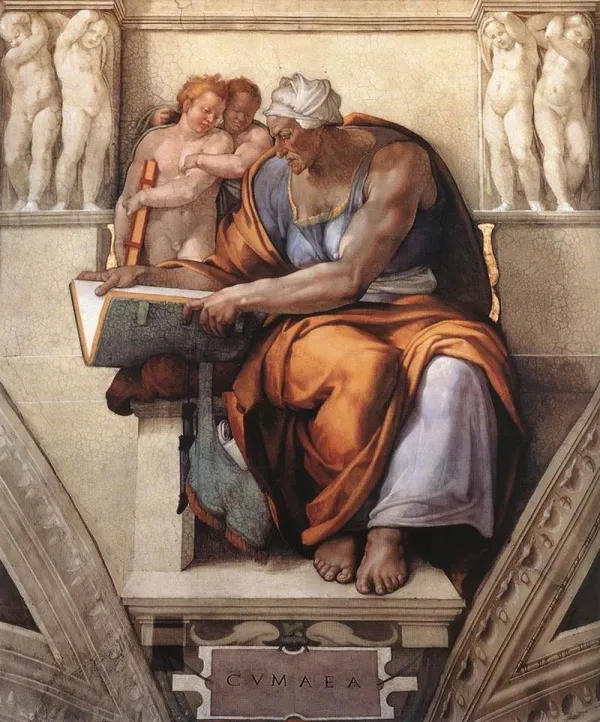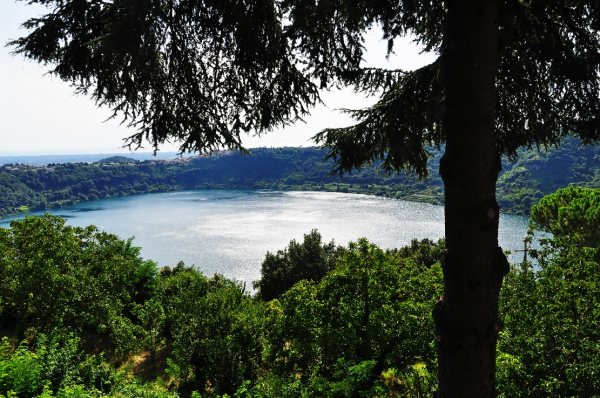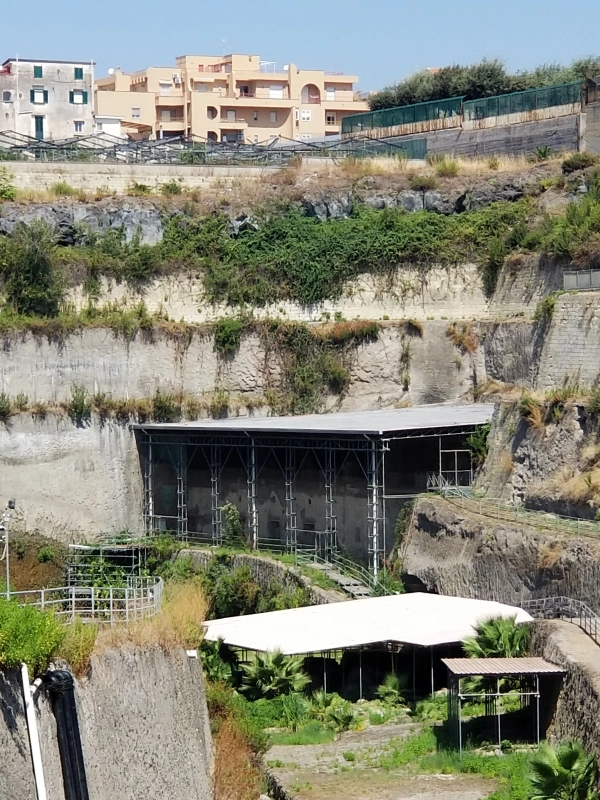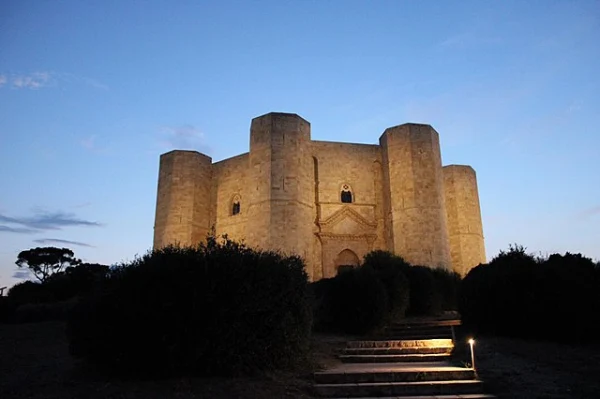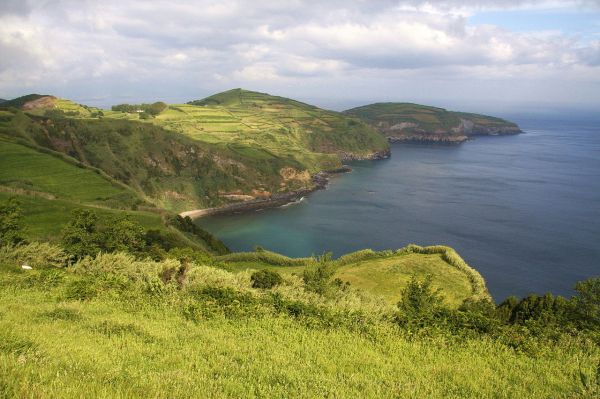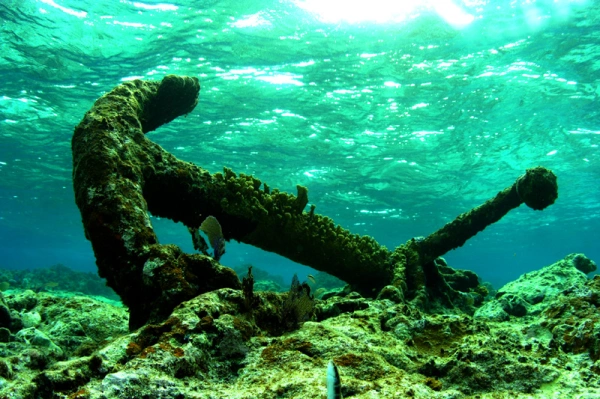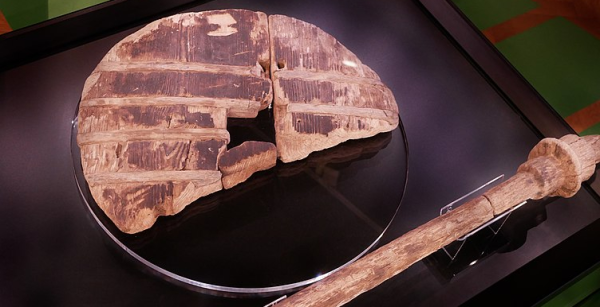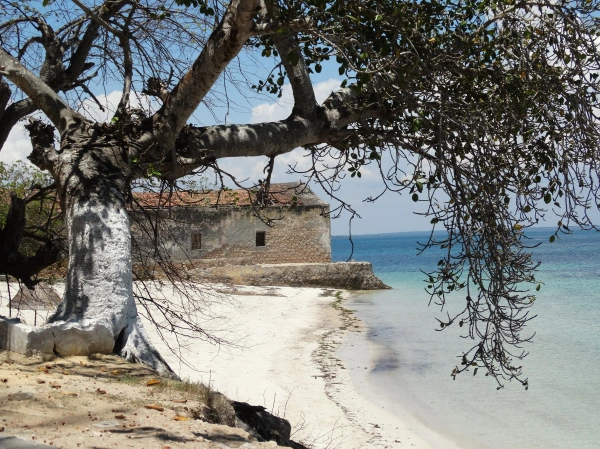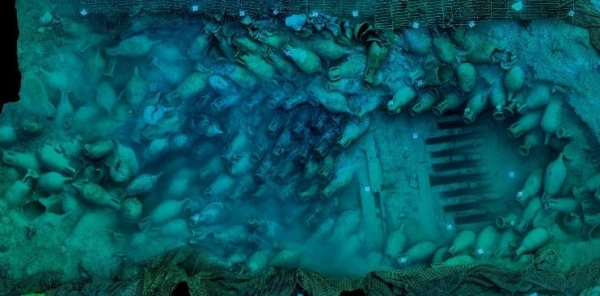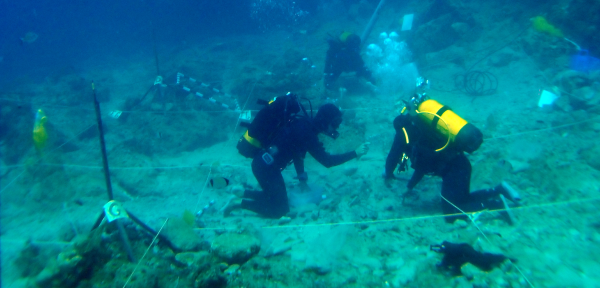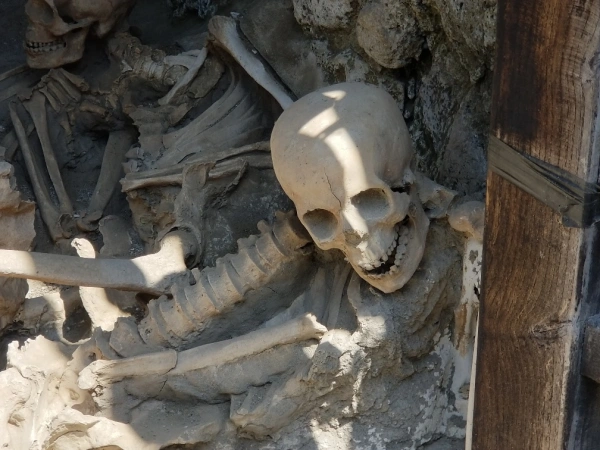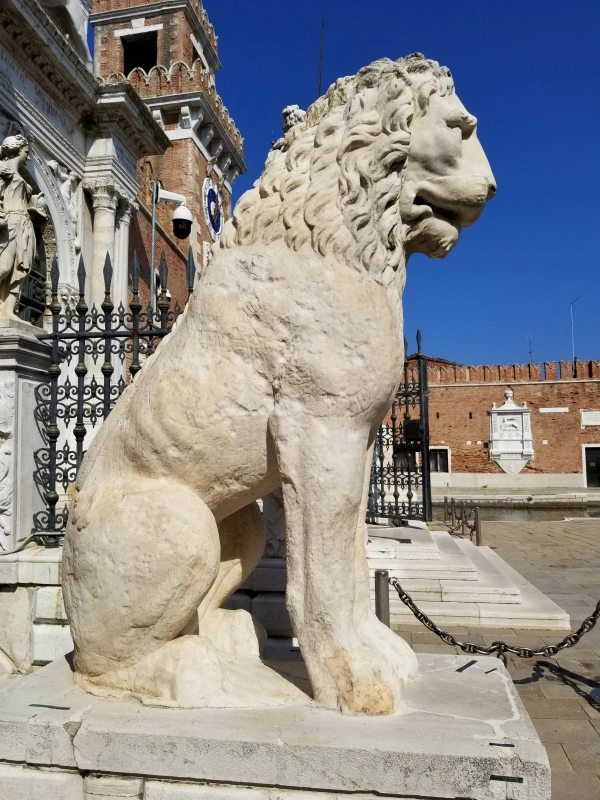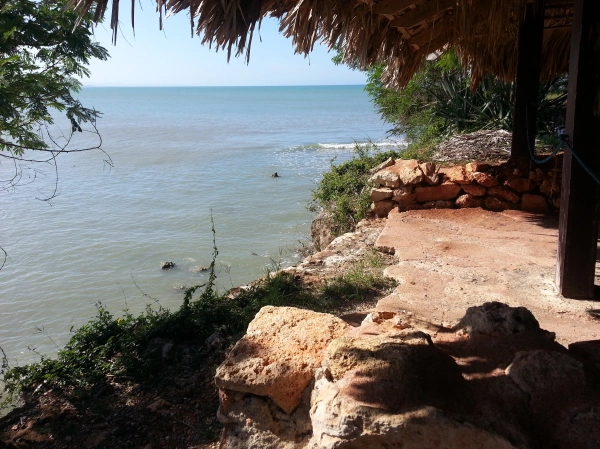The majestic horses in the paintings of Johann Georg de Hamilton are a Baroque marvel. With graceful movements, robust hindquarters, and High School postures, they embody the strength and elegance of the breeds of that time. The depiction of intricately adorned and braided manes, muscular bodies, and expressive features gives these 18th-century portraits a unique,... Continue Reading →
Which are the oldest riding arena and the oldest riding hall in the world?
This question arose during a discussion with Giuseppe Maresca, the revitalizer of the nearly extinct Neapolitan horse breed. For decades, Maresca has been searching not only for surviving Neapolitan horses but also for the oldest existing riding hall. It is undisputed that in the 15th/16th century, Italians laid the foundation for modern riding. Men like... Continue Reading →
Darwin and the Bibel – Are both right?
The Big Bang theory is widely accepted among scientists and describes the origin and evolution of the universe. We know that the universe began as an infinitely small point that was hot and dense and has been expanding ever since. However, the Big Bang theory only explains what happened after the initial expansion of the... Continue Reading →
The mystery of the two dead men in Pompeji
In recent years, the discoveries at the Suburban Villa of Civita Giuliana, known as Domus del Sauro Bardato (the House of the Saddled Horse), have captured the world's attention. This luxurious property from the time of Emperor Augustus is located just a few steps from the walls of ancient Pompeii, and 9 km away from... Continue Reading →
Selling Gladiator Blood
It seems, when a gladiator died, there were certain persons to profit... selling his blood.
A secret alphabet to defy the Romans?
The art of Ogham created a fascinating medieval alphabet system primarily used to transcribe early Irish and later Old Irish languages. This early form of communication has been discovered on roughly 400 surviving orthodox inscriptions, mostly in southern Munster, throughout Ireland and western Britain.
Does the Maya goddess lack a finger?
There is an unusual statue in Mexico that appears to be missing a finger. Although a replica of the statue located nearby shows the usual five fingers, it appears that the original statue was intentionally created with one finger missing.
Does God have a wife?
In traditional Christian belief, God is referred to as "He" or "Father," which gives the impression that God is male. While most Christian theologians would try to argue that God is beyond human gender and is not limited by our categories of male and female, we still pray to ‘God father in heaven’. How much clearer can it get? Yet, once tehre was a female...
The development of Artificial Intelligence could cost us millions of lives
There have already been instances in history when technological and societal changes totally transformed our society. The breakdown of the Roman Empire and the Industrial Revolution cost millions of lives. The same will happen wih AI.
Surprising: Originally carrots weren’t orange
Originally carrots were not orange, as they are today. The coulour was chosen by breeders for a special reason. And its not because of the vitamines...
Will ChatGPT and Artificial Intelligence falsify our history?
AI, such as ChatGPT, reproduces and multiplies in a quite dreadful manner inaccuracies and biases. This may soonaffect the public's knowledge of history.
Did the ancient Romans share their toilet sponge?
The ancient Romans did not use toilet paper as we know it today. Instead, it was for a long time supposed that they used a sponge on a stick called a "tersorium" or a “xylospongium”, provided to clean themselves after using the toilet. But that may not be true.
Before the digital age: Sending a message in ancient Rome
If you were to travel back in time, you would see that already ancient Romans had a quite well functioning postal service.
Shocking: Do we fail in evolution?
Ancient populations venerated the Mother Goddess, as they realized that only reproduction ensures survival. Has our today's society something to learn from the past? And are we about to loose in the game of evolution?
Today’s bizarre fascination with castration is nothing new
While most people will be uncomfortable with the idea of being castrated, a new trend has emerged where individuals voluntarily choose to nullify their gender. Although this may seem like a recent development driven by modern social trends, the practice of castration has been around for centuries and has been used for various reasons. It... Continue Reading →
A tsunami destroyed the tomb of Alexander the Great
For at least 150 years, scientists have recognized that something unusual happened along the western coast of Crete and the surrounding shores of the Mediterranean. When Captain Thomas Pratt mapped the Aegean Sea in the 1850s, he noticed an ancient Roman harbor on an island that sat 6 meters above the sea level. Archaeologists have... Continue Reading →
How did Cleopatra die?
As is well known, Cleopatra VII was the Queen of Egypt and the last ruler of the Ptolemaic dynasty. Even today, the public is impressed by the story of how she used her charm and intelligence to seduce powerful men and secure her throne as pharaoh, especially Julius Caesar and, after him, Mark Antony. However,... Continue Reading →
The location of Cleopatra’s Tomb
You certainly saw the recent headlines in the press about the possible upcoming discovery of Cleopatra’s tomb. A good moment to debate the true location of that tomb. Despite extensive search, the place of the tomb of the famed Cleopatra remained until today a mystery. But we have quite reliable hints. Yet, these do not point to the place, in which one might be looking for it in this moment…
A short history of Ascetism – or what you didn’t yet know about Masochists
Ascets have gone to extremes in history. But was tehre indeed some benefit in ascetism?
Bending over and eating glass – Extreme body use in history
Over the course of history strange events happened and they also included some persons to begin to eat glas and metal and to bend to inimaginable snake forms.
The 11 most extreme body transformation practices in history
Humans have transformed their bodies in many strange ways throughout history. From body modifications such as tattoos, piercings, and scarification, to extreme bodybuilding, plastic surgery, and even the use of prosthetics, humans have found ways to alter their appearance and function in unique and sometimes unusual ways. While not everyone went as far as to remove the bridge of his nose, as Federico Montefeltro, many people modify their bodies for cultural or religious reasons, while others do it for personal expression or as a form of rebellion. here the most extreme...
The debate on the date of the eruption of Vesuvius in 79 continues
There is ongoing debate on which date exactly the eruption of Mount Vesuvius in 79 AD happened. Here are the pro and the con.
The six open questions about the Vesuvius Eruption of 79 AD
Six questions remain open about what happened when Vesuvius erupted in 79 AD. One of them is, if Pliny ever managed to safe some of the people from the coast. A shipwreck might give answers.
Deepest Middle Ages: The peculiar, yet true story of the royal fall into the loo
Ludwig Bechstein was a German writer, well-known for his collection of tales in the German Saga Book. It was first published in 1853 and contains over 500 German folk tales, legends, and sagas that Bechstein collected from various sources. Many of them have a verifiable background. Two of the most well-known tales in the collection... Continue Reading →
Surprising mystery: Virgil, Klingsor and some very special witching powers
As most will know, Virgil (70-19 BCE) was a Roman poet reputed for his wonderful Bucolica, the enchanting Georgica and the Roman national epic, the Aeneid. While he is today only acknowledged as a singer of nature and heroes, in old times and especially in the Middle Ages he was above all considered a magician with a reputation for possessing a special knowledge of the mystical and the occult.
Mandylion: What became of the God-Created Image of Jesus Christ?
What became of one of the most holy relics of Christ - the veil with the imprint of his face, the Mandylion?
Sacred deformations: Caesar’s human-footed horse and the six-fingered saints
Sometimes nature plays strange tricks on its creations. Mutations, deformations, and peculiarities are the raw materials of which evolution is made. However, humans have often attributed miraculous powers to these deformations. For example, horses with cloven hooves were placed close to unicorns, and six-fingered humans were deemed as having the makings of saints. Even the... Continue Reading →
Treasure hunting or archaeology: when did they start to make a difference?
When did the chase for treasure change into archaeological research?
Amazing Discoveries: A couloured image of antiquity?
"Noble simplicity and quiet grandeur" were the ideals proclaimed by J. J. Winckelmann as the beauty gospel of Greek art in his first publication on the subject in 1755. Today, however, it is generally accepted that sculpture in ancient Greece, and even in ancient Rome, was not quite as "simple" as previously supposed. Sculptures were... Continue Reading →
The 5 best Christmas markets
The best Christmas Market in the World lies in Dresden.
Naples – Bizarre traditions venerating skulls
To this day, Naples is characterized by thousands of years old rites and cults of Greek, Roman, and Christian origin mixed with traditions and legends. One particularly bizarre ritual is the cult of the Anime Pezzentelle, which involves venerating the souls in purgatory by tending to skulls. While the region has always had a tradition... Continue Reading →
A sacrifice of Kings in Ancient Ireland?
In many ancient cultures, it was customary to make sacrifices to the earth or the gods. Today, we know that the ancient Germanic peoples offered sacrifices, especially in lakes, crevices in the earth, and bogs. Broken weapons, valuable musical instruments, and even human beings have been found. The low-oxygen environment and the presence of tannic... Continue Reading →
On the Relativity of Slaughter – Sacrificial Rites of the Maya, Aztecs and Toltecs
The idea of sacrificing people, including children, on a large scale, tearing out their hearts, skinning them, and bathing in their blood in public on a daily basis is incomprehensible from today's point of view. However, this is exactly what many Latin American peoples did in pre-Columbian times. They sacrificed captives, slaves, and sometimes their... Continue Reading →
Walled in alive in Antigua Guatemala
In Antigua Guatemala, the former capital of Guatemala, there are numerous ruins of Spanish colonial buildings. The magnificent churches, in particular, still attract visitors today. One of them is particularly fascinating due to its peculiar structure and goosebump-inducing history: the Church and Convent of the Capuchin Nuns. The convent was consecrated in 1736 and originally... Continue Reading →
The Great Antrum: A mysterious tunnel in the crater wall – path to Hades or heating of the emperors?
If you drive along the coast in the north of Naples, you will see it dominated by factories, sunny beaches and crowded streets. In between, however, there are ancient brick walls, you see grottos in the tuff on the beach and the outlines of sunken structures appear in the azure water. Involuntarily, you ask yourself:... Continue Reading →
Who burned the ships of Caligula? or: When Rome was almost displaced to Egypt
Despite their significant historical importance, the general public is hardly aware of the Nemi ships and their history. The reason for this is obvious: they no longer exist. However, their story is fascinating. These two ancient ceremonial boats were massive constructions that Emperor Caligula had built to honor the goddess Diana during his brief reign... Continue Reading →
Did another Cleopatra die in the Villa of the Papyri?
The most famous Villa of the World lies still under the Lava of the Vesuvius. Who did die in its ruins?
Why is Castel del Monte octagonal?
Have you ever wondered why the famous Castel del Monte has eight corners? here is why.
The place to be
They exist, the bottlenecks of the world, the places where everyone passes through and which everyone knows. Today you would list Frankfurt Airport, Heathrow and Miami, in the past it was the Azores, Goree in Senegal, Madagascar or the Cape of Good Hope.
Of pirates and shallow reefs
There are strange places in the middle of the sea that lurk in front of the sailor like trapdoors in front of the wanderer. The Abrolohos Reef in Australia, the Goodwin Sands off England, the Skerki Banks off Tunis, the Bassa do Indias near Mozambique and Chinchorro Banks off Yucatan are just a few of... Continue Reading →
Who invented the wheel?
Who invented the wheel?
The begin of our globalized world
Increasingly globalized and interconnected world, it is interesting to ask the question - when did all this actually start? When did humanity first produce standardized consumer goods, created with standardized materials, ... When did we set out on the road to modernity?
As rich as a bag of pepper
Certain words in our language still show our seafaring history.
The land without rivers – the magic of the cenote cave system
For humans and animals, the Yucatan context has always meant that they had to search for water underground or use broken Cenotes as wells.
A history of lead in ancient Rome
Great events are known to cast their shadows, even if sometimes they cast them behind. Whether the Emperor Nero was really the one who burned Rome in 64 A.D. or whether it burned due to carelessness is difficult to determine today, but it is clear that this event had consequences. Among others it resulted in... Continue Reading →
Survival of the fittest at sea
The history of the world is often based on coincidences, but sometimes human beings have a hand in them, and this is specifically true at sea.
A mysterious Villa lies deep under the Lava in Herculaneum
In August of last year, I found myself standing in a grotto, its walls grey and damp, adorned with stalactites. The flickering light from our headlamps created an eerie atmosphere as I struggled to keep my footing on the ancient steps of a sunken amphitheatre enclosed by tuff as hard as stone. Amidst the lava,... Continue Reading →
What if, for once, a pandemic would make us happier?
The Corona pandemic might not have only negative effects. It taught us to better telework, and might improve our lifebalance and the wellbeing of our world.
The haunted lion of Venice
The story of a mysterious haunted lion statue in Venice leads to the traces of a peculiar theft of art.
The first European settlement on the American continent is threatened by deterioration – La Isabela
La Isabela, the first European settlement in the Americas, is threatened by erosion and decay.

